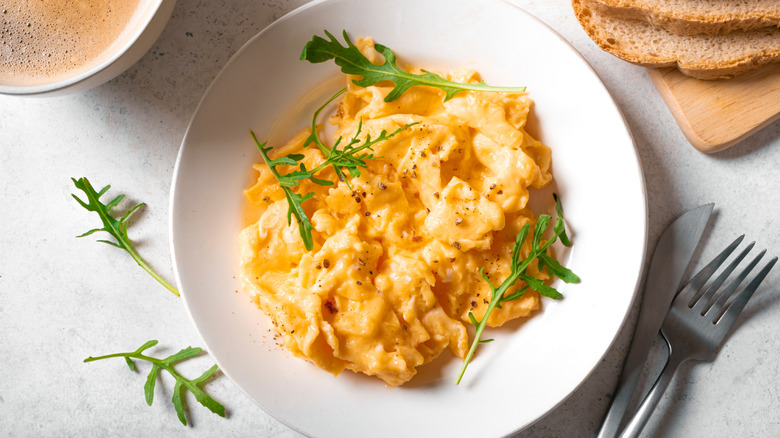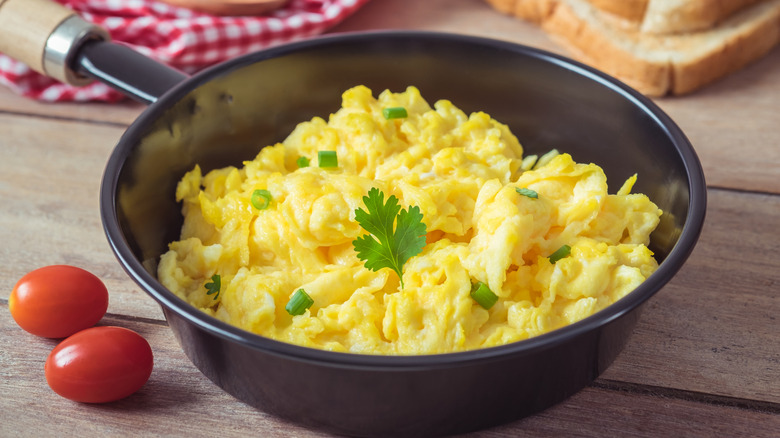Avoid This Temperature Mistake When Making With Scrambled Eggs
There are plenty of tricks out there to achieve the perfect scramble, but there's one that's super simple and takes nearly no effort: bringing your eggs to room temperature before cooking them. Grace Vallo, founder, chef, and recipe creator for the food blog Tastefully Grace, told Food Republic about the 12 common mistakes to avoid when making scrambled eggs. According to Vallo, it's absolutely key to bring your eggs to room temperature if you want them to cook evenly and quickly.
Bringing eggs to room temperature can take time if you do it naturally, simply leaving them on the counter. But if you don't want to risk morning hangriness while waiting for them to warm up, there's an easy solution. Just briefly place the eggs in a bowl of tepid water. After about 10 minutes, they should be ready to crack, stir, and then scramble on the stovetop. This method makes it easy to check their temperature, since you can quickly feel if the shell is no longer cold. But, if you want to get some of your prep time out of the way, you can also whisk them together in a stainless steel bowl, then place the bowl in a warm water bath you've created with another larger bowl or pan. Pop in a thermometer, and when the raw eggs reach about 70 degrees Fahrenheit, they're all set to be scrambled. The only caveat with both of these quick tricks is to be sure to not use water that's too hot — you don't want them to start to scramble before they even get to the stove.
More tips for perfectly scrambled eggs
Whether you're scrambling eggs solo or whipping them up for a crowd, chances are you want them to turn out just as delicious as your favorite brunch spot's version. The first step is to make sure that you're using fresh eggs. Of course, if you have laying hens, you're already ahead of the game, but if not, you can easily test the freshness of your eggs. Simply pop them in a bowl of water and see if they sink. If they do, you have exactly what you need. You can still crack it into the pan if it stands up in the water, but it won't be at its freshest. Eggs that float should be discarded.
When you're scrambling eggs, you'll also want to mix in a little something extra for the best texture. A splash of milk or water is the most common, but you can also take Alton Brown's advice and use mayonnaise for the creamiest version of the dish. And when you're mixing it all together, be sure to leave your whisk in the drawer — use a fork instead, for a light and fluffy end result.
Finally, turn your attention back to temperature when it's time to cook. Never pour eggs for scrambling into a hot pan. Start with a pan that's cold and only use a low temperature once the eggs are in it. Then, simply let the heat do its work while you stir, and in a matter of minutes you'll have perfectly scrambled goodness ready to be plated.


